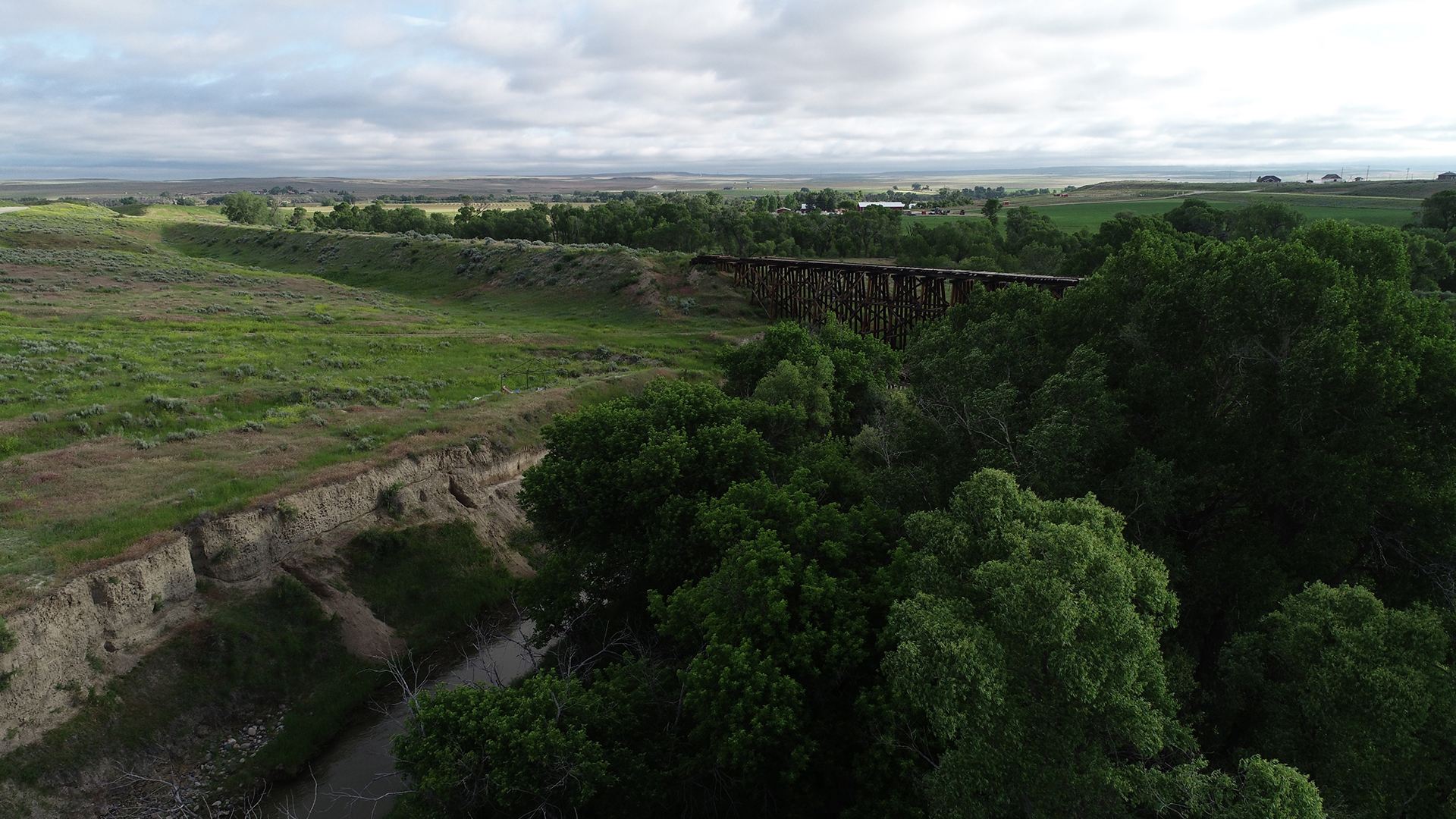13,000-year-old bone bead is the oldest of its kind in the Americas
Some of the 1st Americans crafted a bone bead nearly 13,000 years ago, making it the oldest of its kind on record in the Western Hemisphere.

Archaeologists in Wyoming have discovered the oldest known bead in the Western Hemisphere: a nearly 13,000-year-old bone ornament crafted by the prehistoric Clovis people.
The tubular, 0.3-inch-long (7 millimeters) polished bead has several grooves and was crafted from the bone of a hare, according to the researchers. The bead's slight red color might be from the surrounding reddish iron oxide-rich soil, they noted.
The researchers found the bead near the remains of a prehistoric hearth along with other artifacts from the Clovis people. The Clovis were not the first people in the Americas; they arrived in North America before 13,000 years ago, via the Bering Land Bridge — a now-submerged path across the Bering Strait that existed during the last ice age. Evidence of the Clovis is tied to their iconic spearheads, but the Clovis disappeared around 12,750 years ago, right around the time when the frigid Younger Dryas period began and some of the region's large animals went extinct.
Related: 13 of the oldest archaeological sites in the Americas
"When we stereotype the lives of first Americans, we tend to think of them as hunters of large mammals, especially mammoths," study first author Todd Surovell, an archaeologist at the University of Wyoming, told Live Science. "Here we get the tiniest bit of insight into another side of life which is clothing and decoration."
The tiny bead was discovered in 2016 at the La Prele Mammoth site in Converse County. Archaeologists have also unearthed more than 40,000 stone Clovis tools at the site, as well as the partial remains of a juvenile Columbian mammoth (Mammuthus columbi), the burned remains of ice-age bison (Bison antiquus), bone needles and the remains of several fire pits, according to the study.
To determine the type of bone that the Clovis used to craft the bead, the researchers took a sample of its collagen for a zooarchaeology by mass spectrometry (ZooMS) analysis, which provided information about the collagen's chemical composition. The results indicated the bone belonged to a hare in the genus Lepus, but they couldn't pinpoint the species. However, there are a few candidates. At that time, black-tailed jackrabbits (L. californicus), white-tailed jackrabbits (L. townsendii), snowshoe hares (L. americanus) and Arctic hares (L. arcticus) all lived in what is now Wyoming. What's more, the team found jackrabbit bones at a nearby fire pit.
Get the world’s most fascinating discoveries delivered straight to your inbox.
The finding is the first clear proof that Clovis people utilized hares, the researchers wrote in the study, which was published on Feb. 5 in the journal Scientific Reports.
"This bead shows that Clovis people adorned themselves or their clothing with personal ornaments to signal aspects of cultural identity," Surovell said.
To bolster the idea that the bead was human-made and not the byproduct of a wild animal's actions or digestion, the team noted that the bead is the only polished bone scrap out of thousands at the site, was made from a low-nutritional-value bone that carnivores usually skip and was found 3 feet (1 meter) from other Clovis artifacts. Moreover, evidence of prehistoric carnivores is not common at this site, the researchers said.
Although the researchers couldn't directly date the bead, the site itself has been radiocarbon dated to 12,940 years ago, Surovell said. Similar tubular beads, crafted in the same style from hare bones, were previously found in Siberia and date from 28,000 years ago. It's possible that the first Americans brought this bead-making practice with them from Siberia, but the finding of a single bead makes it difficult to draw conclusions, the researchers said. It's possible that bead-making from hare bones evolved independently in both places, they added.
While it's unknown how the Clovis used the beads, it's possible that such ornaments served as markers of identity or group affiliation. Earlier research into prehistoric beads suggested that bead use originated when population densities increased and encounters with unfamiliar people became common. However, it appears that the Clovis used beads when their human population densities were low, the study's authors said.
Edward Jolie, an archaeologist at the University of Arizona who was not involved in the study, called the research "well-executed and tightly focused."
Jolie told Live Science in an email that "actual or potential evidence for Clovis era decorative and symbolic material culture is exceedingly rare, so any new discoveries such as this greatly enhance what is currently known and invite a host of new questions and implications worth considering."

Soumya Sagar holds a degree in medicine and used to do research in neurosurgery at the University of California, San Francisco. His work has appeared in New Scientist, Science, Discover, and Mental Floss. He is a passionate science writer and a voracious consumer of knowledge, especially trivia. He enjoys writing about medicine, animals, archaeology, climate change, and history. Animals have a special place in his heart. He also loves quizzing, visiting historical sites, reading Victorian literature and watching noir movies.




